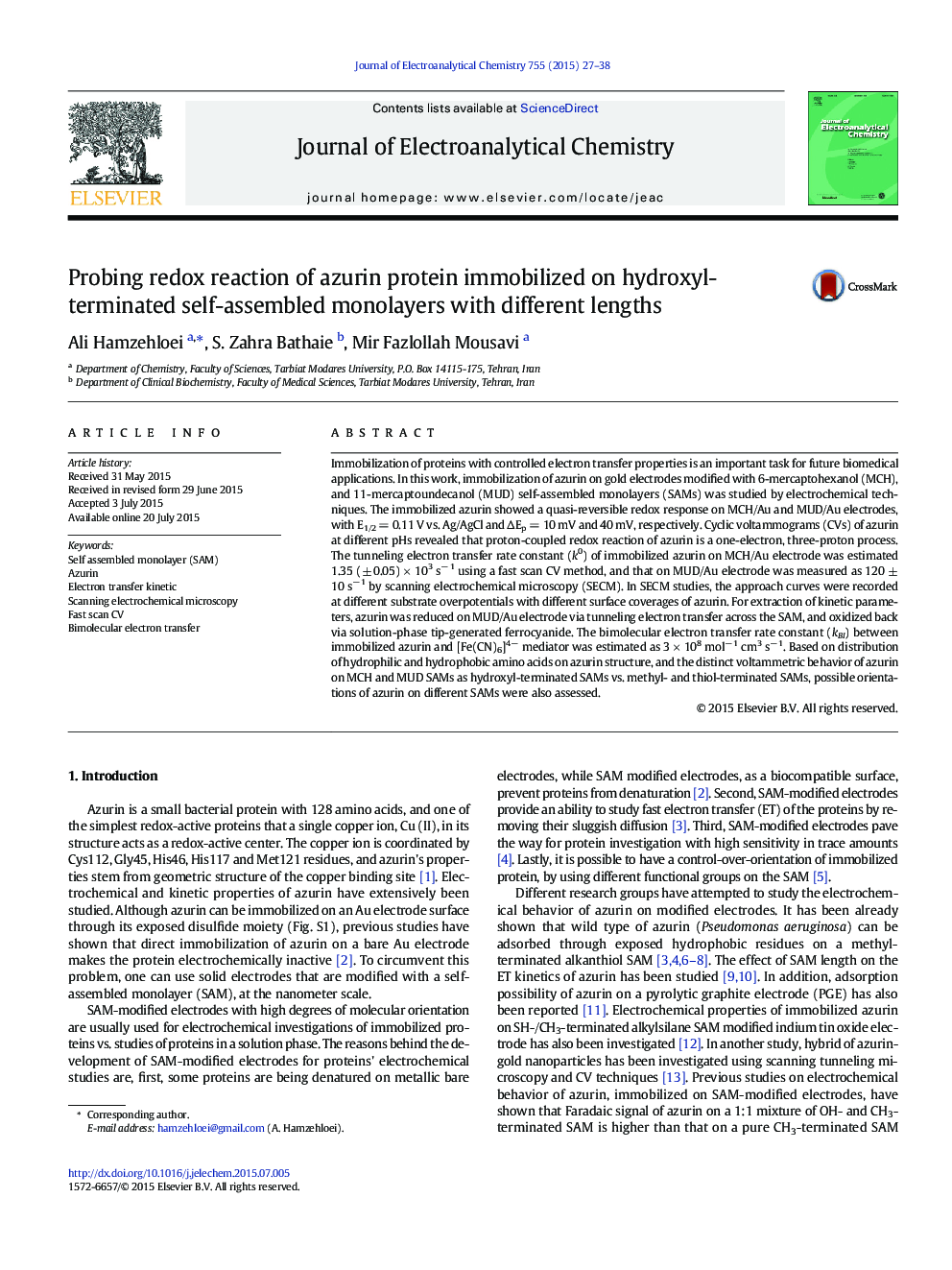| Article ID | Journal | Published Year | Pages | File Type |
|---|---|---|---|---|
| 218317 | Journal of Electroanalytical Chemistry | 2015 | 12 Pages |
•Azurin is immobilized on OH-terminated SAM successfully.•The formal potential of the protein is 0.11 V vs. Ag/AgCl.•Slope of ∂E1/2/pH is obtained 19 mV per pH.•The obtained k0 is higher value than azurin on CH3-SAM at pH 7.0.•Different orientation is proposed for azurin on OH-SAM vs. CH3-SAM.
Immobilization of proteins with controlled electron transfer properties is an important task for future biomedical applications. In this work, immobilization of azurin on gold electrodes modified with 6-mercaptohexanol (MCH), and 11-mercaptoundecanol (MUD) self-assembled monolayers (SAMs) was studied by electrochemical techniques. The immobilized azurin showed a quasi-reversible redox response on MCH/Au and MUD/Au electrodes, with E1/2 = 0.11 V vs. Ag/AgCl and ∆Ep = 10 mV and 40 mV, respectively. Cyclic voltammograms (CVs) of azurin at different pHs revealed that proton-coupled redox reaction of azurin is a one-electron, three-proton process. The tunneling electron transfer rate constant (k0) of immobilized azurin on MCH/Au electrode was estimated 1.35 (± 0.05) × 103 s− 1 using a fast scan CV method, and that on MUD/Au electrode was measured as 120 ± 10 s− 1 by scanning electrochemical microscopy (SECM). In SECM studies, the approach curves were recorded at different substrate overpotentials with different surface coverages of azurin. For extraction of kinetic parameters, azurin was reduced on MUD/Au electrode via tunneling electron transfer across the SAM, and oxidized back via solution-phase tip-generated ferrocyanide. The bimolecular electron transfer rate constant (kBI) between immobilized azurin and [Fe(CN)6]4 − mediator was estimated as 3 × 108 mol− 1 cm3 s− 1. Based on distribution of hydrophilic and hydrophobic amino acids on azurin structure, and the distinct voltammetric behavior of azurin on MCH and MUD SAMs as hydroxyl-terminated SAMs vs. methyl- and thiol-terminated SAMs, possible orientations of azurin on different SAMs were also assessed.
Graphical abstractFigure optionsDownload full-size imageDownload as PowerPoint slide
